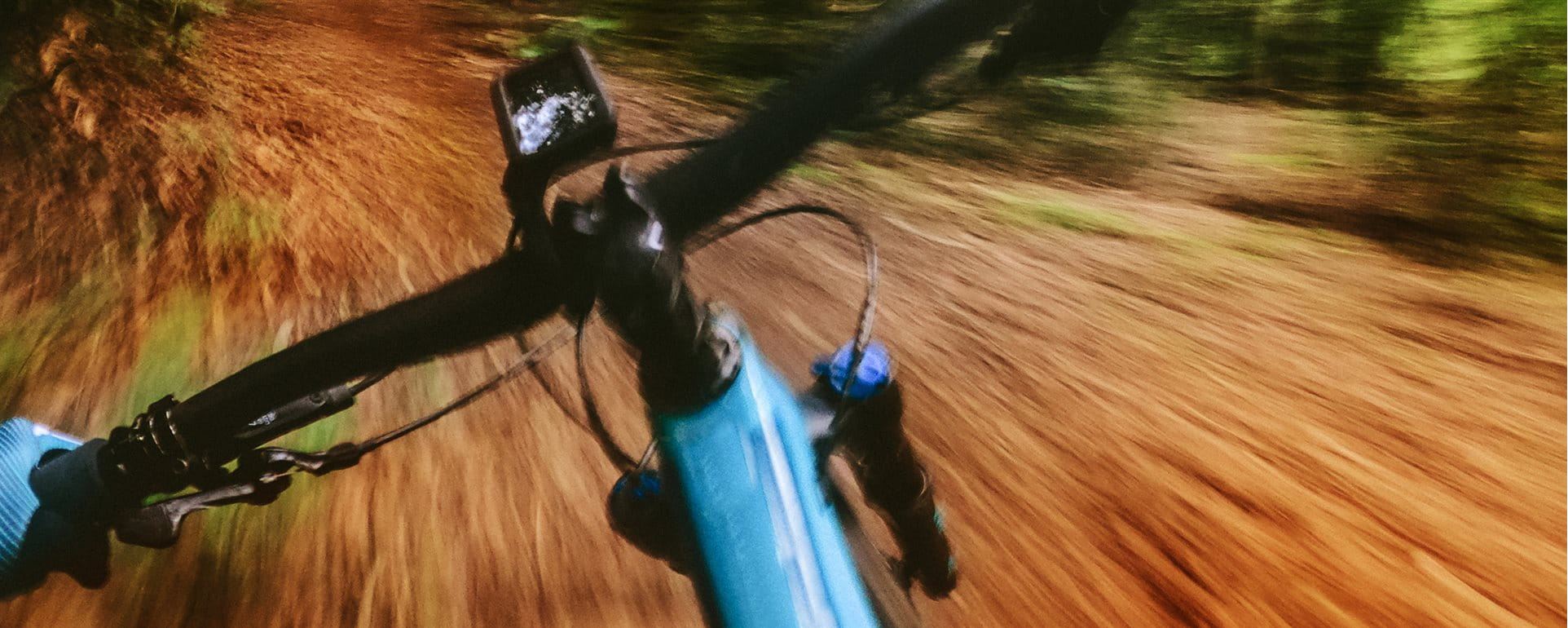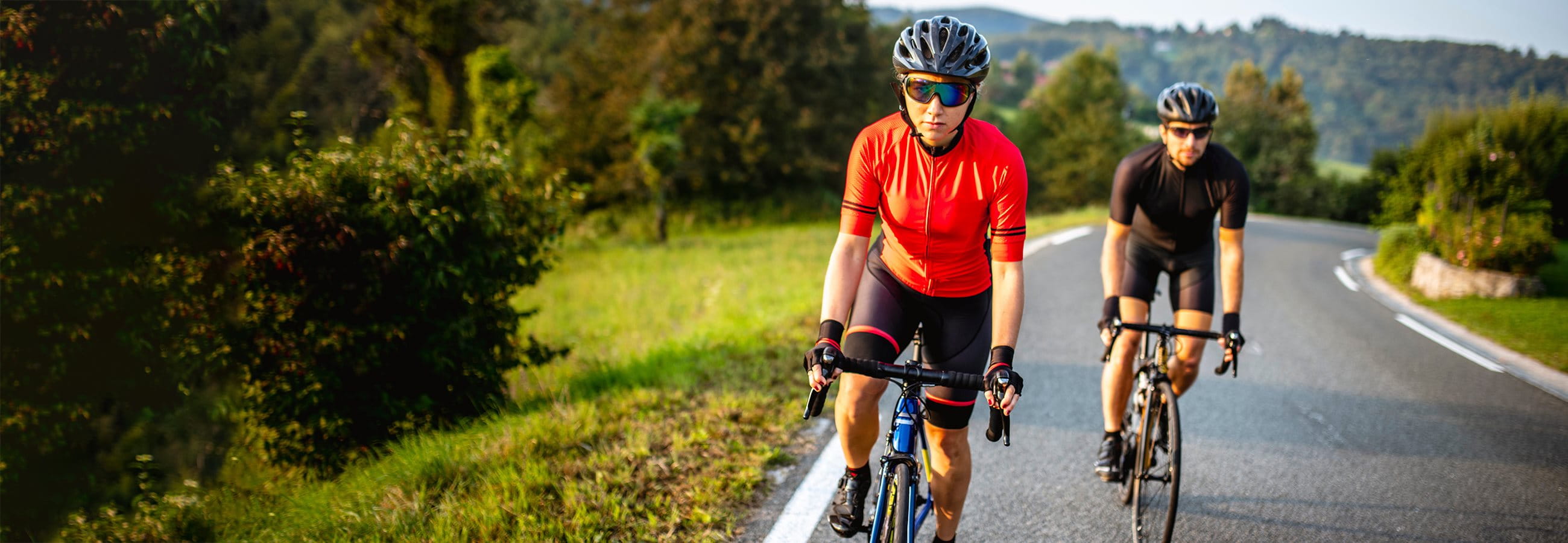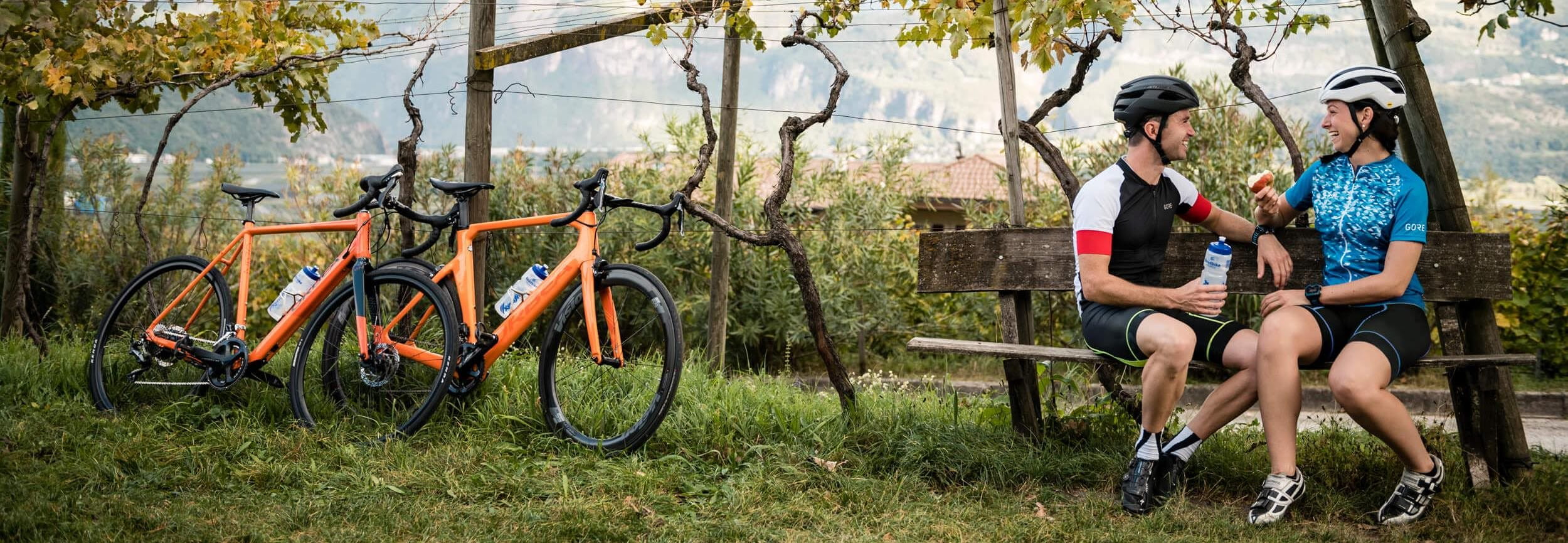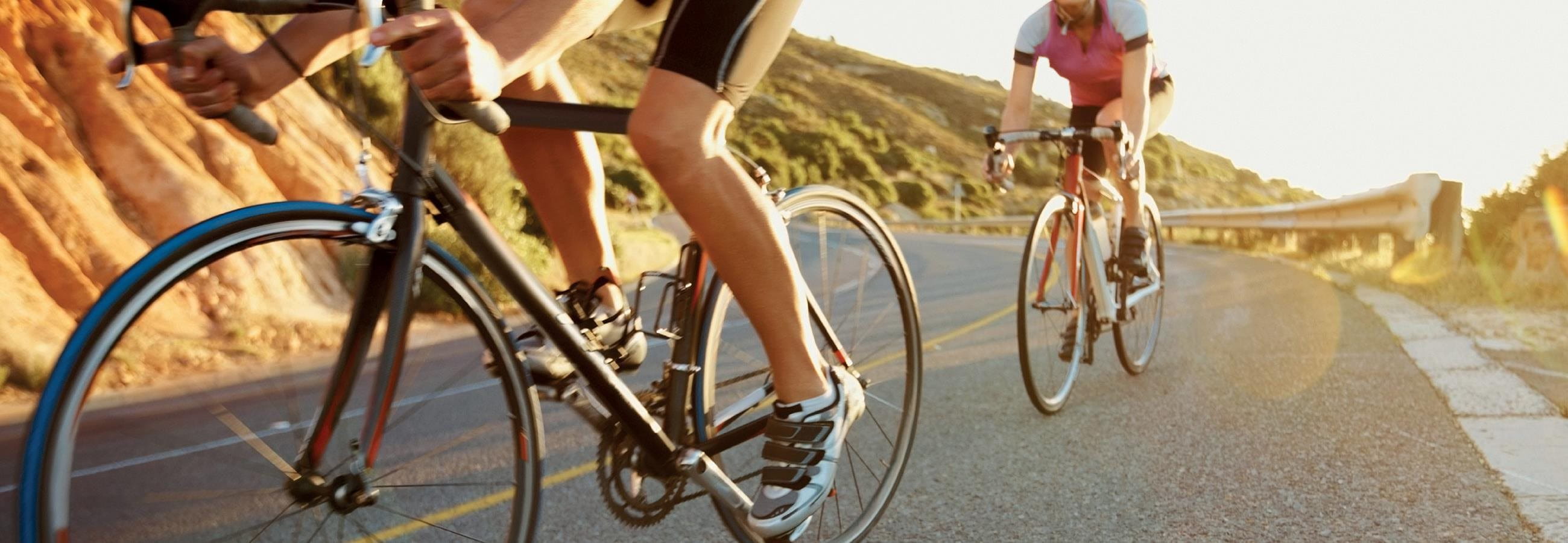Mountain biking demands balance, strength and stamina
Which bike is right?
There is a broad range of mountain bikes: Different bikes are suitable for different purposes, for example tackling climbs comfortably or enjoying steep descents. Leisure mountain bikes are suited to riders who want to enjoy simple pleasure riding, and are advantageous for urban cycling, while cross-country bikes are more suited to sports cyclists who want to ride trails at higher speeds. Anyone who dreams of heading into the mountains, on the other hand, should opt for an All-mountain design, and descents are best enjoyed on an Enduro or a Freeride/Downhill bike. Hence, it’s important to consider what you actually want to do on the bike. After this, it’s worth getting some basic advice from a specialist. Beginners will probably be happy on an all-rounder.
Incidentally, there’s also the e-bike: The inbuilt motor makes it possible for the rider to regulate their own physical activity, meaning they can take climbs relatively easily and then enjoy the subsequent descent. “E-bikes are booming, most significantly among business people who don’t have a lot of time, or among couples who don’t have the same levels of stamina,” Schefer reveals. “This means they can enjoy a ride together without the individuals’ fitness playing such a significant role.”
Equipment: the right outfit
Tip
Breakdowns
What insurance do I have for my bike and my tricks?
What sort of protection do I have if I have an accident or someone steals my bike? If the bike or e-mountain bike (with pedal assistance up to 25 km/hour) is stolen from your home, the basic household contents insurance will cover it. However, corresponding additional modules are required for protection in the event of theft when away from home or damage, for example as a result of a fall. For more expensive bikes and e-mountain bikes, the limited sums insured of these two additional modules of the household contents insurance are often insufficient. Therefore the following applies: Anyone who wants to comprehensively insure their (e-)mountain bike should take out a special bike insurance.
And what happens if it’s not only the bike, but also the rider who suffers? As a general rule, accident insurance will cover injuries sustained while mountain biking. Nevertheless, this does not release the biker from their own responsibilities, and anyone who thunders down a mountain at excessively high speeds, in very unfavorable weather conditions or with defective brakes is likely to have their payments reduced.
Anyone who performs a somersault while riding, turns on their own axis, takes their hands off the handlebars or their feet off the pedals is taking a relative risk, according to the Federal Accident Insurance Institution, and is therefore not fully insured. Bike expert Daniel Schefer also warns against reckless experiments on the bike. Most importantly, you shouldn’t attempt any stunts you’ve seen on YouTube, he says. “YouTube conveys a false image: You only ever see everything going right, but these people are professionals,” says Schefer. “Anyone wanting to learn acrobatic tricks should practice in a skills park under professional supervision.”
The concise ABC of mountain biking
- Accidents
You should bring a first-aid kit with you in your backpack in case of accidents: This should include a plaster and some wound cream as a minimum. - Backing
If you’re heading into remote places or into Alpine areas, you should always ride with another person. Don’t forget: Often you won’t have any mobile phone reception. - Caution
Take care when you encounter pedestrians or horses. Never brake suddenly, but make your presence known and overtake with caution. - Dangers
Note: You may encounter dangers along the trail, for example as soon as you see fence posts, there may also be dangerous hidden wire. - Expertise
Have your mountain bike checked and maintained regularly by a mechanic. If the bike is not safe to use, any benefits you receive would most likely be reduced in the event of an accident. - Fine Suspension
The right suspension is very important for mountain biking. This way, you prevent nose-overs, reduce the impact on joints and make riding easier. - Ground
The terrain may be dangerous. It’s particularly important to exercise caution, especially on descents and beside rivers and streams: If you’re not sure of the terrain, it’s best to dismount and walk.
And don't set out without the all-important:
- helmet, gloves and cellphone.
Be sure to wear a well-fitting helmet and gloves. The mobile is another important item you should always have with you for emergencies. Exchange numbers with the other participants and save emergency contacts.
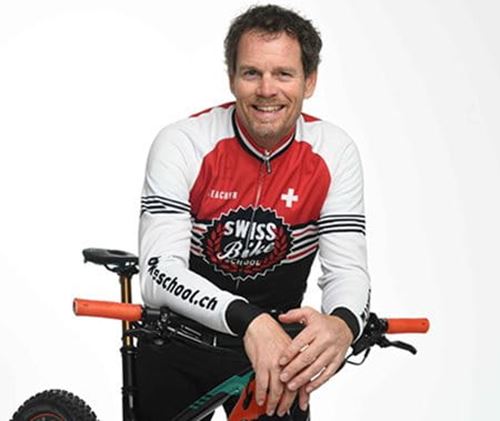
Interview with Daniel Schefer, Swiss Bike School
Three questions for Daniel Schefer:
We learn to ride a bike when we’re children, of course, so what’s the purpose of the bike school?
It’s true that you learn to ride a bike in school, yes, but there the focus is primarily on how to behave in traffic. Our courses cover the technical demands of mountain biking as a sport: Participants learn to position their weight correctly, to brake the right way, ride safely down steps, do an emergency stop on gravel and jump over barriers. The courses are staggered for different levels, from nervous beginners who have just bought a bike to experienced cyclists who want to keep learning new things. By the way: there are also courses for women with a more relaxed approach and more chats about fashion accessories (laughs).
“License to bike”: Do people need a license to bike?
After the course, participants receive a certificate with a “license to bike”. This isn’t an official certificate, but rather a personal record of achievement. On top of this, the Swiss Bike School also trains people to become cycling instructors.
Do you have any other advise for mountain bikers?
Use the bike to keep discovering new things. Personally, for example, I don’t have a favorite route or a favorite holiday destination, but rather I keep heading off to discover new routes, areas and cultures. Last winter, for example, I spent three months in New Zealand. My recommendation? Don’t bike alone, particularly in high mountain regions and in valleys with no mobile phone reception, for example in remote parts of Engadin. If you ever do have to go out cycling on your own, then be sure to take the necessary technical equipment. Connect your mobile phone to GPS and add an alarm function, so that an alarm is triggered via the GPS if you have an accident. Nevertheless: cycling with a friend is not only safer, but also more fun.
